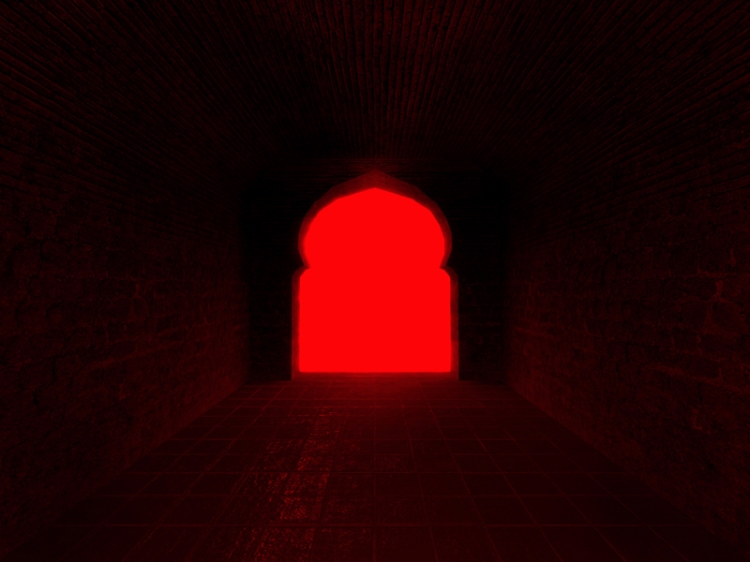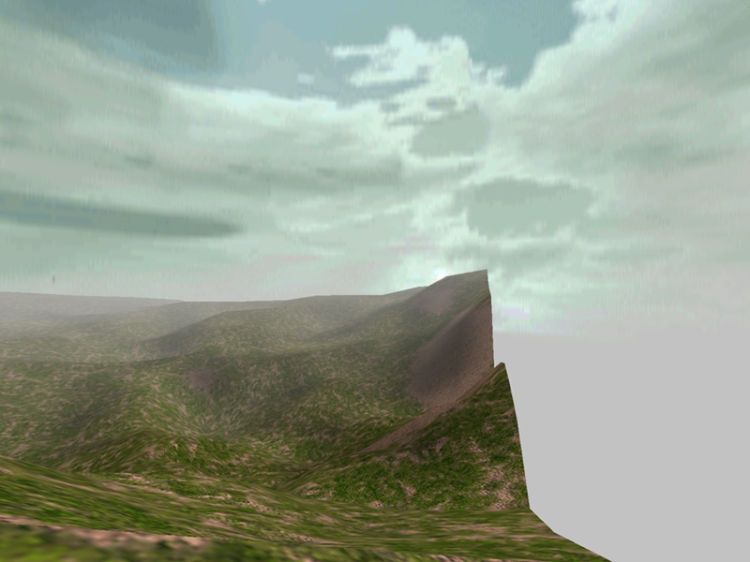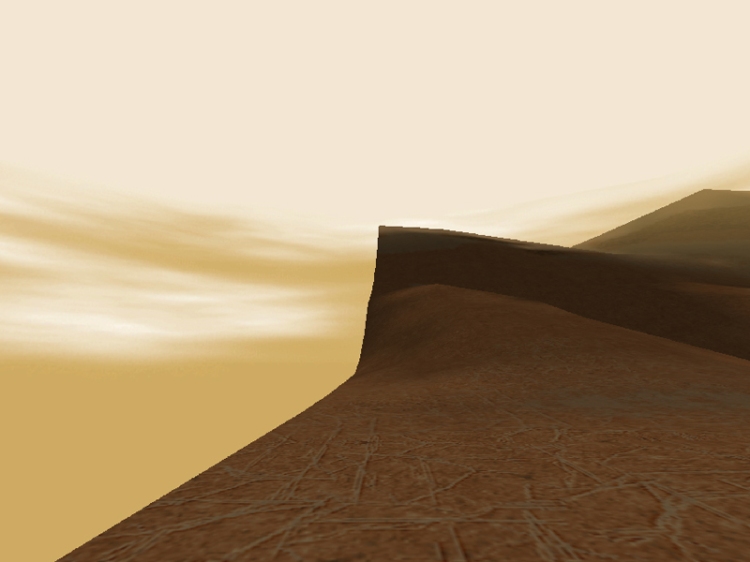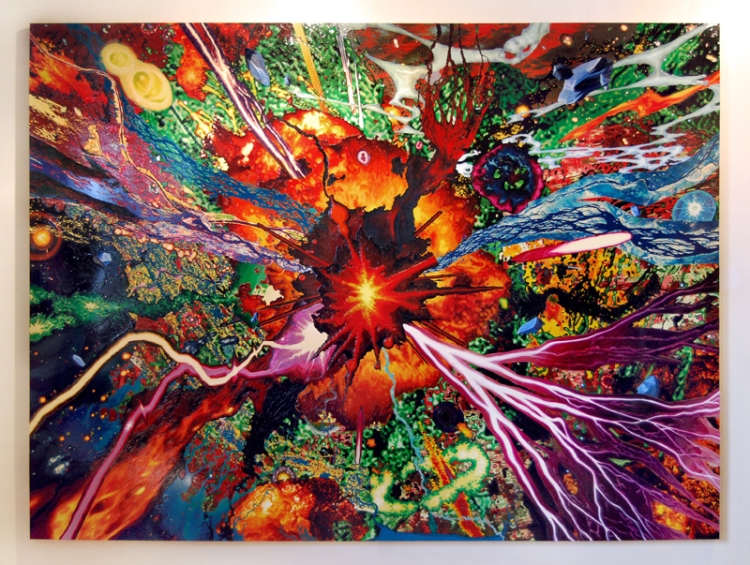I recently came across the work of Oliver Warden through a friend. Oliver falls into an interesting category of photography, one that, in my opinion, has yet to be explored or defined. He’s actually two artists, a painter under the name of Oliver Warden, and a photographer named ROBOTBIGFOOT. In his photography, Oliver takes screen shots of video games and prints them as large, fine art prints. Not only are they beautiful, but the result is an amazing way of challenging ideas about the future of photography and the validity of these alternative realities. Oliver was kind enough to answer my questions about his work. The bottom line: Thank god there are photographers pushing to expand our definitions of…well…everything.
“It took a while for me to wrap my head around the idea that I was a photographer because I always associated the photographer with the camera. Once I let this go it opened up a entirely new idea of what that meant. The computer screen became not a lens where light enters through, but a porthole that light emanates from. ” – Oliver Warden

Jacqueline Bovaird, Glasshouse Assignment: How did you get started/interested in art?
Oliver Warden: In first grade my class had an assignment for St. Patrick’s day. We had to draw two pictures. The first involved coloring inside the outlines of a leprechaun. The other was a landscape. Our assignment was to color in the leprechaun, cut him out and glue it to the landscape page. I did this and showed it to my teacher. She immediately took me to the principals office. He immediately called my parents encouraging them to enroll me in art classes. What I had done was drawn the landscape as a room, in a classic one point perspective. All the furniture and objects descended in space. I guess this was unusual because come the next available opening I started Saturday classes at the Cleveland Museum of Art. It was all over from that one point on.
JB: What led you to making this type of art?
OW: Today I’m ferrying in-between two bodies of work. One is made by Oliver Warden and the other is created by my online persona ROBOTBIGFOOT, who I’ve been for roughly ten years now. I make paintings as Oliver Warden and work as a photographer inside video game landscapes as ROBOTBIGFOOT. I always say that every decision I make is informed by every other decision I’ve ever made. Every work is an accumulation of everything that has come before it. Talk about pressure!

JB: What is your methodology in creating these pieces?
OW: For the photographic works, I take screen shots inside various video games. I usually take several thousands screen shots before I edit and select a small number as artworks, usually under 15. If it calls for it, the images are brought into Photoshop and manipulated to fit a conceptual framework. I print them on Hahnemuhle Photorag 308 with an Epson 9800 K3 Ultrachrome.
JB: How do you feel this work fits in with the current art scene?
OW: The most significant thing for me, in terms of understanding my work in the history of photography is the shift away from the use of the object called a camera. Inside these virtual spaces, there is no such object. The camera is merely a construct that can be placed anywhere. So, the camera serves as an echo or reflection of your mind’s eye. The only limitations are determined by the virtual engine that powers each game. It took a while for me to wrap my head around the idea that I was a photographer because I always associated the photographer with the camera. Once I let this go it opened up a entirely new idea of what that meant. The computer screen became not a lens where light enters through, but a porthole that light emanates from.

JB: Who do you feel is your main audience/who are you making this art for (you or us) ?
OW: I feel that every artist first makes art for themselves. They have an impulse or idea, a problem or activity that produces art and helps them to understand something deeply private but visibly public. If they serve other obligations first, like making money or creating beauty or quality or function, then they serve the public first and are probably designers. I like the idea that art is useless and design is useful and the play between these two things gets even more interesting when art enters the public sphere!

JB: How do you feel virtual reality filters into our own reality, and then, in there, into the art world?
OW: One of the other projects I’m working on right now is my feature length animated film, The Wind. I am using machinima, or video game driven animation. In my story, our characters, who are video game players and high school students, ferry in between multiple versions of reality and fantasy. The thing I’m starting to suspect is that fantasy is less of an alternative to reality and more of a lifestyle choice, like choosing to be healthy or educated. In other words, if you have the means, you then have the choice to never leave your fantasy, thusly making it your reality. I wonder if the art world is an insulated fantasy community as well, protected by the ills of the world. It might be best to view it not as the pinnacle of culture but a subculture like any other that you can buy your way into. Like my characters in The Wind, it takes a epic awakening to jolt people out of this stasis. The economic problems that we all are facing is that jolt for the art world. My only hope is that like my characters, it serves as a renewal process that makes us re-evaluate our decisions and have the courage to transform into something new.

JB: How do you feel your alter ego of ROBOTBIGFOOT serves your artistic purposes? I think the reference to game player’s screen names is great. Why keep that name for your real world photography?
OW: I Googled myself a few months ago. Roughly five links came up for Oliver Warden. However, around 8 pages of links came up with ROBOTBIGFOOT. It was then that I confirmed what I already suspected: online, I’m ROBOTBIGFOOT. This extends into all the work that I create using an online experience, including my video game imagery. It’s simply who I am online. It also serves as a contemporary reason to fall into the artistic tradition of creating an alter ego. This is important to me because of my interest in superheroes and their symbolism of transformation, a subject that sits at the heart of my work. I feel that superheroes stand in not for mythic supernatural gods, but for the struggle of artists to be understood by the general public. The writers and artists who create superheroes give them special abilities that are not understood in the Smallville’s of the world, forcing the heroes to go to big city and test their skills through emotional and physical turmoil. It’s there that they become adult men and women – super styled. The only difference is that in comics the public understands super strength and the joy of flying, where on Earth we’re shackled by mortal man’s ignorance as to where artistic talent comes from and what a f^@king F-Stop is!

You can see images of Oliver’s artwork at
and find information and images of his film at http://www.thewind.tv.
Thanks Oliver!
HAHAHAHAAHAHAHAH THIS IS THE MOST PATHETIC THING I’VE EVER READ. This is DeviantArt-level raping of the word ‘Art’. Computer games aren’t art, and never, ever will be.
That said, your actual paintings are pretty good.
LikeLike
Olive Warden is an @#!%?>&#@ because those 3-D environments, AND the 2-D textures were created by other people, all he is doing is taking a screenshot of them, does anyone else not realize this?
LikeLike
This guy is ridiculous!!
LikeLike
Needs more lensflares. Like your paintings.
LikeLike
This was a great read though! Thanks..
LikeLike
Hello,thanks for this fantastic blogg, i really find many new things on it and i really loved the design of the blogg. I found it on google. I also want to wish you a happy new year.
LikeLike